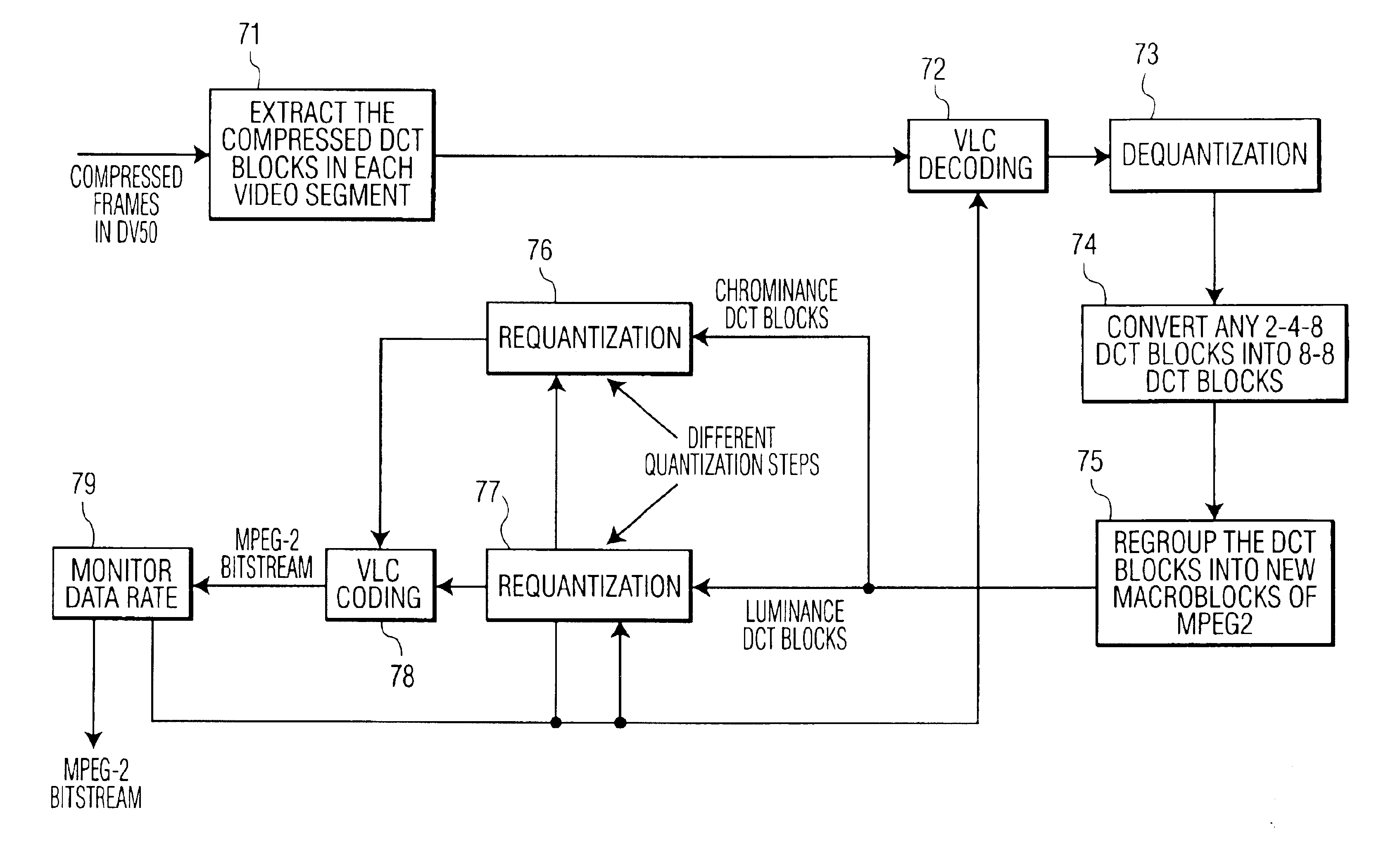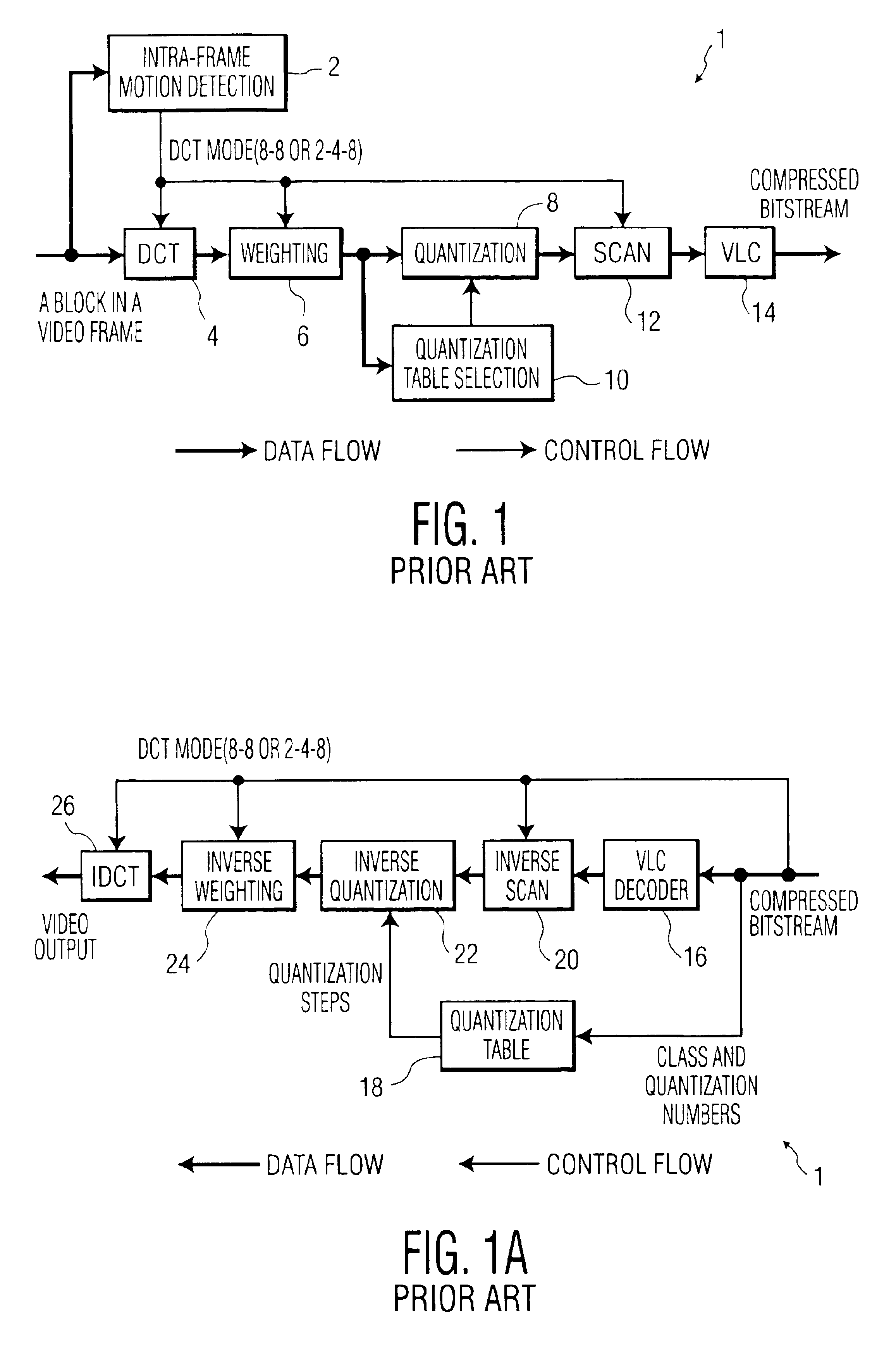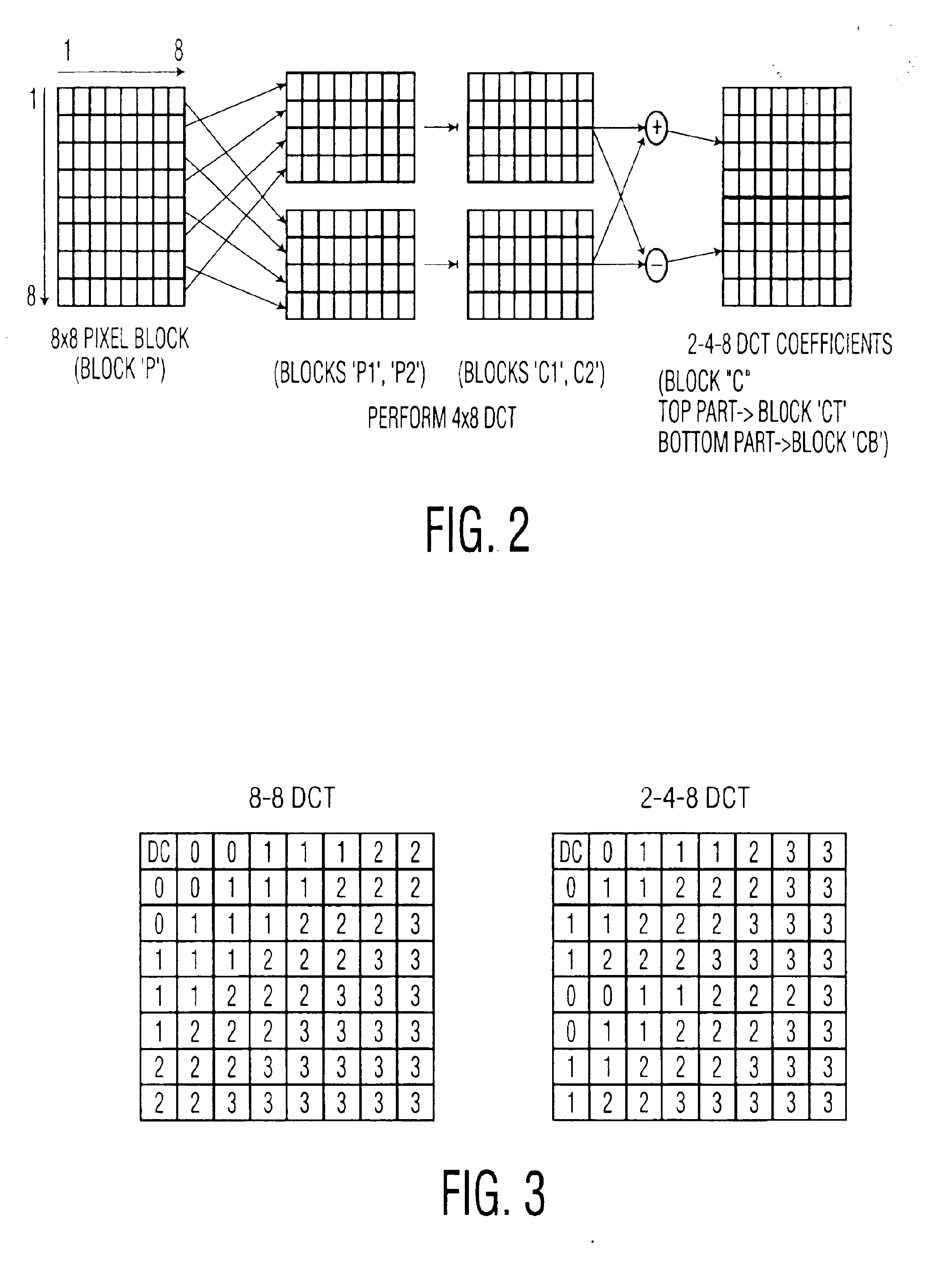System and associated method for transcoding discrete cosine transform coded signals
a cosine transform and coded signal technology, applied in the field of system and associated method for transcoding discrete cosine transform coded signals, can solve the problems of significant loss of information when the signal is compressed, significant degradation of the video image, and loss of the mpeg-2 video compression method, so as to reduce the data rate of the mpeg signal
- Summary
- Abstract
- Description
- Claims
- Application Information
AI Technical Summary
Benefits of technology
Problems solved by technology
Method used
Image
Examples
Embodiment Construction
[0048]Certain terminology is used herein for convenience only and is not to be taken as a limitation on the present invention. The terms “intra-coded” and “intra-frame coded” are defined as referring to a coding scheme that does not employ temporal prediction in encoding a signal (i.e., all of the video frames are compressed independently of each other). In the drawings, the same reference numerals are used for designating the same elements throughout the several Figures.
[0049]The present invention concerns a transcoding system that translates between coding formats based primarily on the same linear orthogonal transform known as the Discrete Cosine Transform (DCT). The transcoder in accordance with C the present invention utilizes this commonality by recovering and re-quantizing these common DCT coefficients for transcoding into a desired format. In this way, it is not necessary to completely decode the signal to recover the original pixel data.)
[0050]Exemplary video formats suppor...
PUM
 Login to View More
Login to View More Abstract
Description
Claims
Application Information
 Login to View More
Login to View More - R&D
- Intellectual Property
- Life Sciences
- Materials
- Tech Scout
- Unparalleled Data Quality
- Higher Quality Content
- 60% Fewer Hallucinations
Browse by: Latest US Patents, China's latest patents, Technical Efficacy Thesaurus, Application Domain, Technology Topic, Popular Technical Reports.
© 2025 PatSnap. All rights reserved.Legal|Privacy policy|Modern Slavery Act Transparency Statement|Sitemap|About US| Contact US: help@patsnap.com



